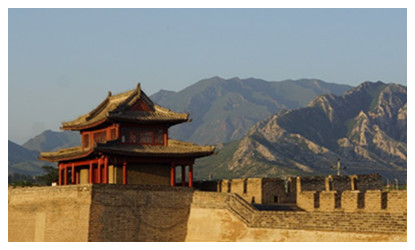Skype: neodalle-travel
Tel: +86 135 7447 2266
E-mail: sales@visitaroundchina.com
History of jimingyi

Post houses played an essential role in ancient China when people rode horses to send messages and official documents. Because the physical strengths of horses were limited, they could not reach a faraway destination in one go. Hence, people had to change horses along the way, and house stations were established along the main road for changing horses. Later, the horse stations also functioned as hotels to provide accommodation and meals for officials and businessmen passing by, as post houses to convey information and mails, and as military fortresses to guard against enemies. Among a great number of post houses, the Jiming Post House is the largest one along the north main roads.
The Jiming Post House was first established in 1219 by Emperor Taizu of the Yuan Dynasty (1271-1368) before setting up his empire. In the eighteenth year (1420) during the Yongle Period of the Ming Dynasty (1368-1644), it was developed into the largest post house along the north post road, in which government offices, storehouses, opera pavilions, and temples were built. In the eighth year (1472) of the Chenghua Period in the Ming Dynasty, city walls were constructed around the post house. The city wall was renovated in the third year (1738) during the reign of Emperor Qianlong in the Qing Dynasty (1644-1911). Although the post house has lost its original functions nowadays, tourists can still have a glimpse of its past splendors by the preserved ancient buildings.
What to see?
The ancient city of the Jimingyi Post House is roughly in a square shape, with a total area of 5.4 acres (2.2 hectares). The city wall measures 1,892 meters in girth, and 11 meters in height. The lower part of the wall is 8 meters to 11 meters wide, while the upper part is 3 meters to 5 meters wide. In the middle of the northern wall and southern wall are the Jade Emperor Pavilion and the Temple of the God of Longevity. There are two gates, including the east gate and west gate. Above both gates are grand gate towers. Moreover, solid barbicans outside the gates can protect the city from being attacked directly.
The city is divided into twelve sections by five crisscrossing streets. Official department and shops are located along the front street, including the Post Government Office, the Directing Office (Courtyard of the He Family), wine shops, grocery stores, and pawnshops. Post facilities can be found along the west street, including stables and post houses which provide lodging and meals for post officials and soldiers passing by. Storehouses are situated in the northeast, while educational institutes are in the north. The Horse Road was the passage of post horses. Additionally, the whole city is dotted with temples, including the Palace of the God of Literature, the City God Temple, the Temple of the God of Fortune, and the Temple of the Goddess of the Mount Taishan. The murals in these temples are still colorful, and the figures are pretty vivid.
Courtyard of the He Family: As the most famous building in the city, the Courtyard of the He Family, used to be Directing House as well, is where Emperor Guangxu and Empress Dowager Cixi of the Qing Dynasty spent one night in 1900. It was made up of five courtyards, but nowadays they are separate from one another.
Temple of the Goddess of the Mount Taishan: Built in the eighth year (1651) during the reign of the Qing Emperor Shunzhi, the temple is characterized by the beautiful murals inside the hall. Because the Goddess of the Mount Taishan is in charge of procreation, local young people often come to pray for babies.
Travel Tips
Address: Jimingyi Village, Jimingyi Township, Huailai County, Zhangjiakou City
Phone: 0313-6814580
Opening hours: 08: 30-17: 30 throughout the year.
Entrance Fees: CNY 70
 Ask Questions ?
Ask Questions ?